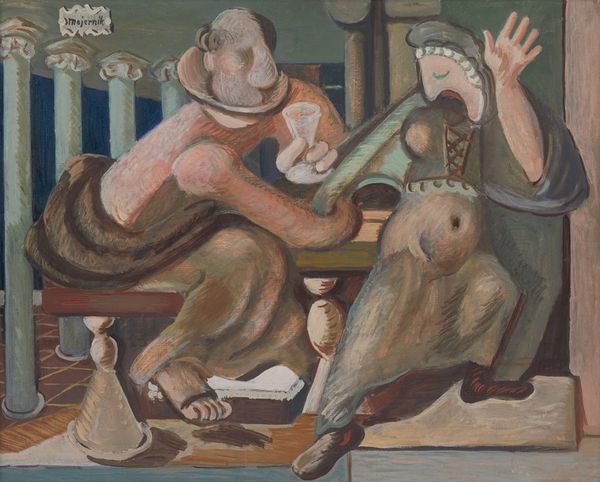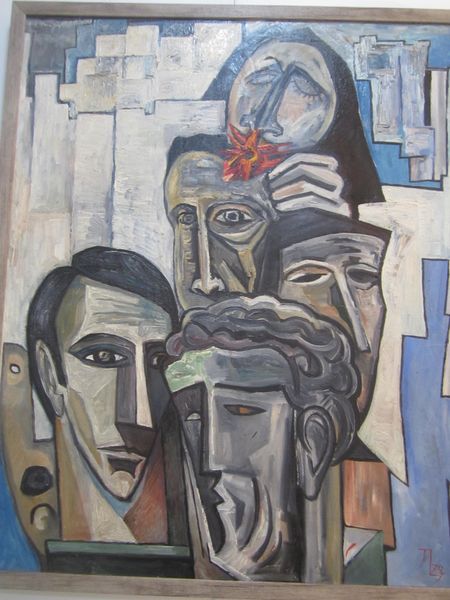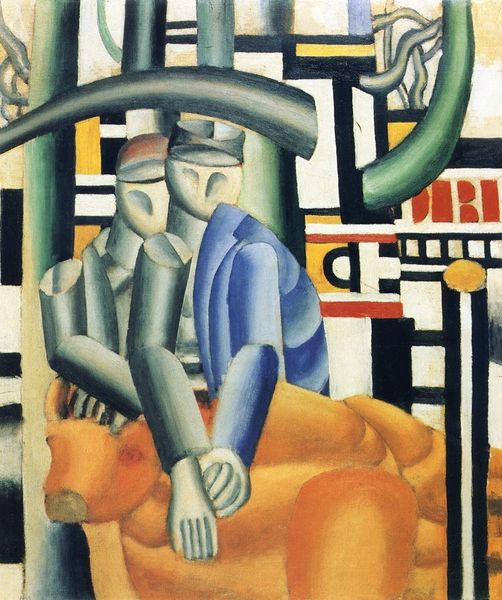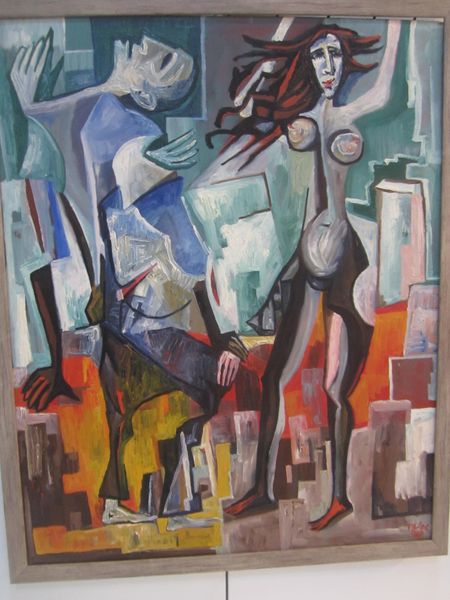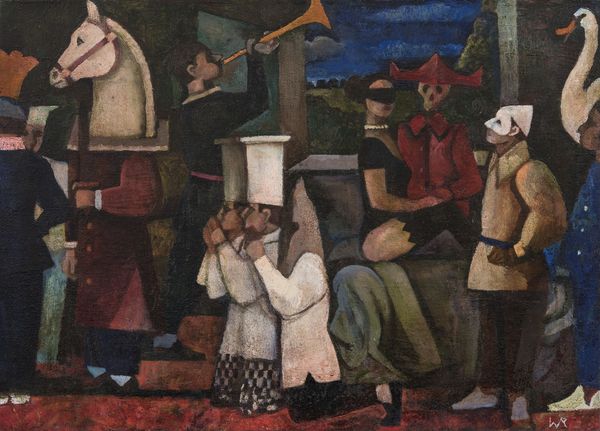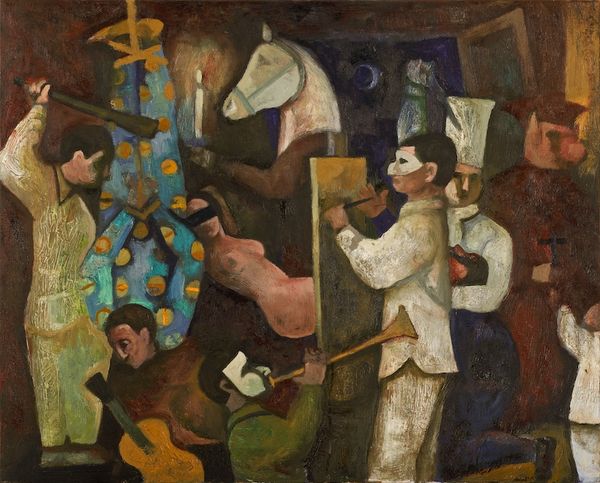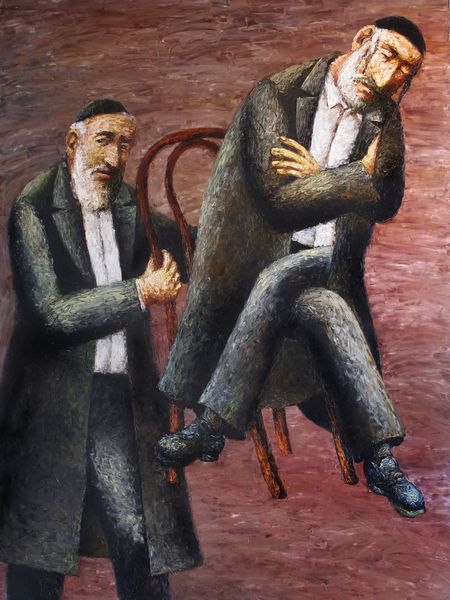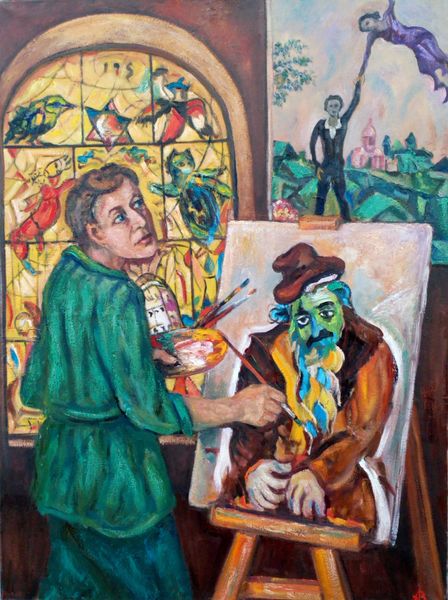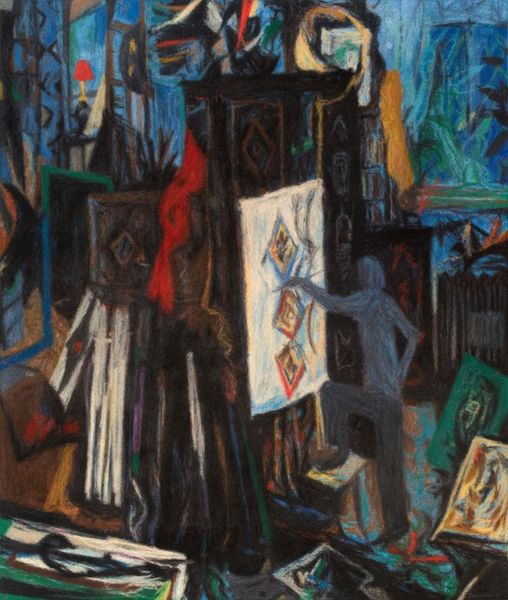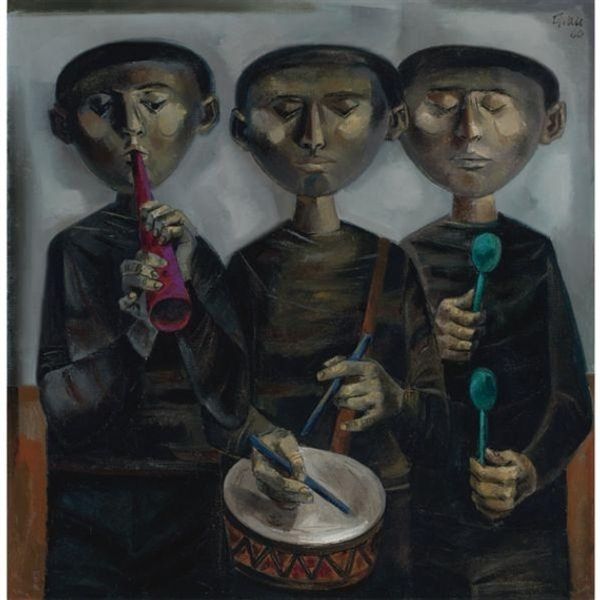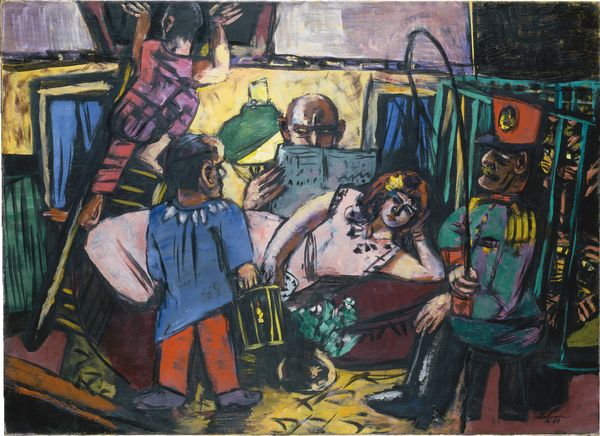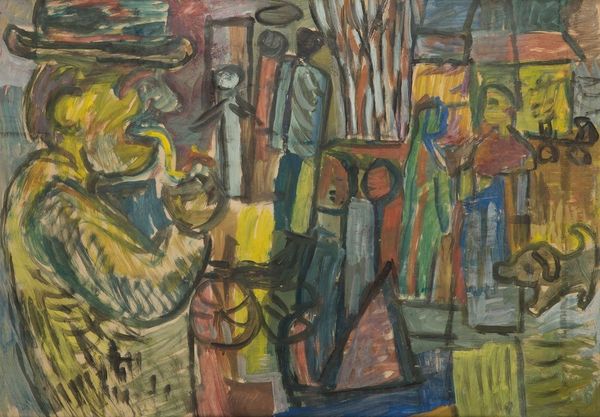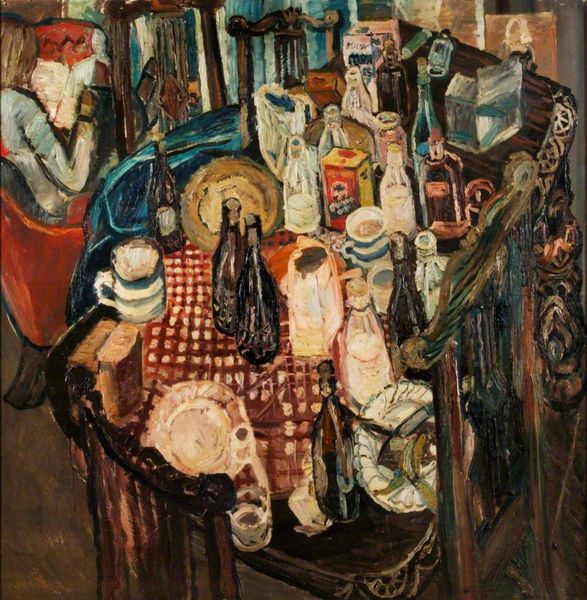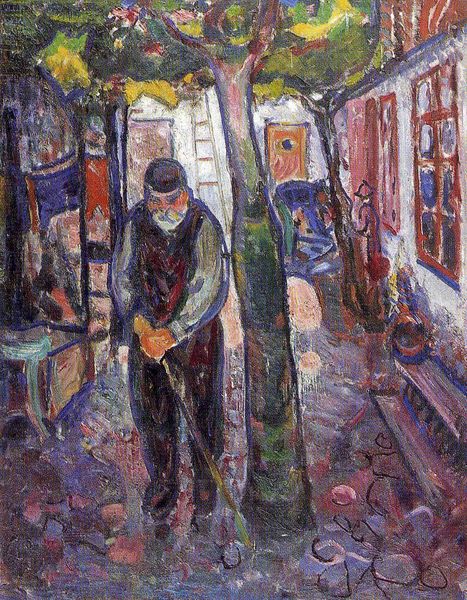
painting, oil-paint
#
portrait
#
painting
#
oil-paint
#
figuration
#
oil painting
#
painting art
#
surrealism
#
portrait art
Copyright: Public domain
Editor: Here we have Jindrich Styrsky’s "Loutkář", painted in 1921. It's an oil painting. The contrasting elements—a skeleton, a devil, and the puppeteer—create such an unsettling feeling. What strikes you when you look at it? Curator: The composition immediately demands attention. Styrsky has arranged the figures—the puppeteer, the skeleton, the devil—not in a spatial relationship that mimics reality, but rather according to a visual logic that emphasizes flatness and the interplay of forms. Notice how the planar surfaces behind the figures serve to compress the pictorial space, creating a sense of tension and ambiguity. What is the relationship between line, color and shape? Editor: So, the flat planes aren’t just background, but active participants in creating that unease I felt? The color palette contributes too, I think. The somber tones against the bright devil create some dynamic. Curator: Precisely. And observe the lines; their artificiality. Their interplay is not just descriptive but constructive, building the very structure of the painting. It transcends mere representation and enters into the realm of pure form. How might Styrsky use those formal elements to play the viewer, like the puppeteer and his puppets? Editor: Interesting! It seems like he uses the elements of the piece not just to represent the subject, but as characters in their own right, that add to the whole feeling of tension in the painting. It adds to the puppet and puppeteer theme! Curator: Indeed. The focus on pure forms leads us away from any fixed interpretation towards a richer experience. Editor: This really helped me appreciate how the individual components work together to amplify the painting’s unsettling quality.
Comments
No comments
Be the first to comment and join the conversation on the ultimate creative platform.
